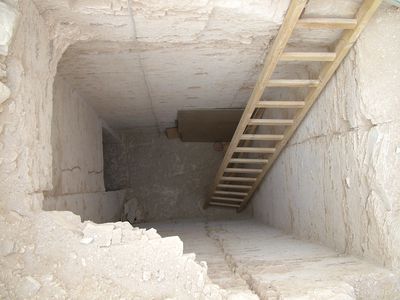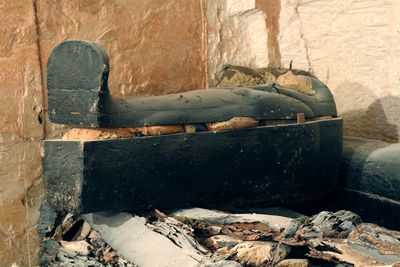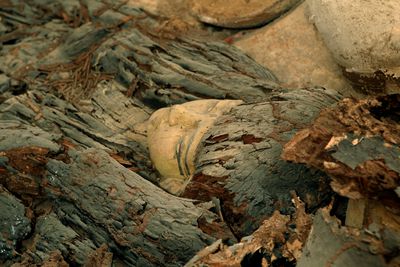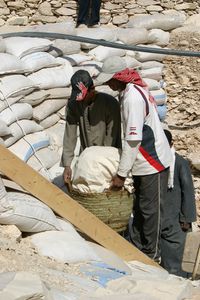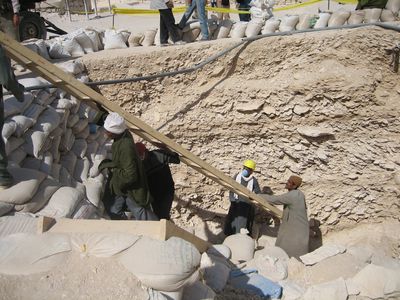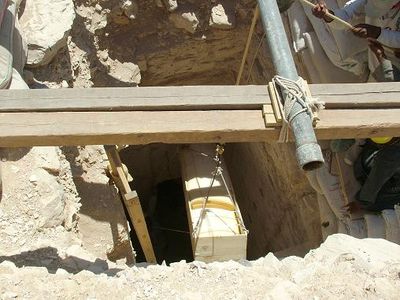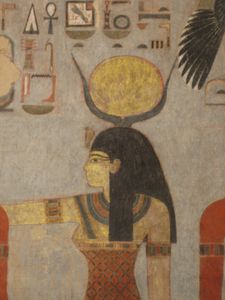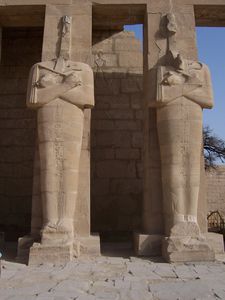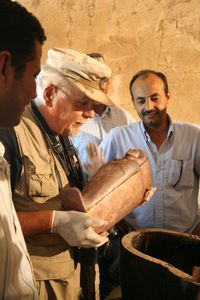Egypt's New Tomb Revealed
A new tomb is found in Egypt's Valley of the Kings, with 28 jars and 7 coffins. What lies sealed inside the jars? Are there mummies in the coffins? And, if so, are they tied to King Tut's tomb?
Ever since Howard Carter's discovery of Tutankhamun's tomb in 1922, experts have suggested that the Valley of the Kings has no more secrets to reveal. But now, 84 years later, Dr. Otto Schaden has uncovered a new tomb - KV63 ("King's Valley tomb 63") - just over 50 feet from the burial place of Tutankhamun, KV62. Could it be a royal tomb? A mummification workshop? Or a cache of royal mummies hidden in an unmarked grave?
In this ground-breaking documentary, the Discovery Channel has gained exclusive access to the tomb and the team of archaeologists working on its contents. For the very first time on television, viewers can witness the excavation of a new tomb in the Valley of the Kings as it happens. This one-hour special will follow archaeologist Ken Nystrom as he journeys to Egypt to follow the excavation and reveal the secrets of the ancient tomb. It is a discovery that could change our understanding of one of the most important periods in ancient Egyptian history.
The discovery of tomb KV63 was announced to the world in February 2006. Otto Schaden has been scouring the Valley of the Kings for decades, convinced that there were further tombs to be found. Recently, while excavating a trench in the centre of the Valley, he found white rock chips - evidence that tomb-cutters had been tunnelling into the limestone beneath. Several weeks of further work uncovered a shaft descending 16 feet into the solid bedrock. At the bottom of the shaft lay a tomb doorway, and behind it a lost world last seen by human eyes over 3000 years ago.
The tomb is a single chamber cut into the limestone. Alongside 28 sealed storage jars are seven sarcophagi, three decorated with painted faces. These could contain the bodies of some of Egypt's greatest pharaohs. The tomb, though, has seen better days. Ravaged by termites, the coffins are badly decomposed and on the brink of disintegration. Some of the fragments bear hieroglyphic inscriptions and seals dating from the reigns of Amenhotep's successors, Akhenaten and Tutankhamun, when Egypt was torn apart by religious revolution and violence. Will these be the key to understanding one of the most turbulent periods in ancient Egyptian history and identifying the people buried in Egypt's new tomb?
The race is on to save the coffins and solve the mysteries of the tomb. The team faces a series of problems now that the tomb is open: severe heat, sandstorms and the risk of flash floods. For nearly 3000 years, the tomb was safely sealed beneath the valley floor. Now, as long as the entrance to the tomb remains open, it's in constant danger.
To assist him in the task of conserving, documenting and analysing the contents of the tomb, Dr. Schaden has assembled a team of experts at the top of their field. Among them are Egyptologist Ted Brock, Egyptian Art expert Professor Earl Ertman, mummification ritual specialist Dr. Salima Ikram and world-renowned wood conservationist Dr. Nadia Lukma. Together, they work against the clock to preserve one of the most exciting find in Egyptology.
Analysis of the coffins and other objects in KV63 has already dated the tomb to the 18th Dynasty, with pottery and inscriptions matching those found in Tutankhamun's tomb. Although the scientific examination of the contents of KV63 is only in its early stages, it is clear that the results could rewrite the history of the 18th Dynasty.
Some of the media you are attempting to download are from Networks that limit downloads to 5 per day.
